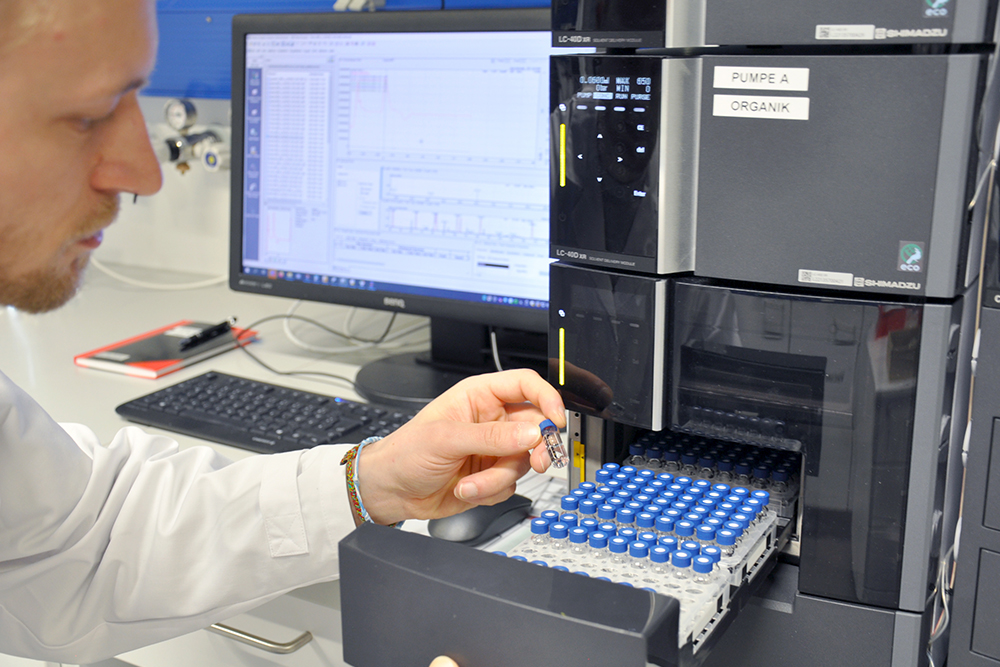
Anthropogenic micropollutants in the water cycle and their degradation are increasingly attracting scientific and societal interest. Previous approaches follow a trial-and-error approach to remove micropollutants quickly and efficiently. In contrast, Fraunhofer IKTS couples the chemical structure of the micropollutant (structural formula or specific molecular structures or functional groups) and the respective standardized degradation process with a predictive model. Thus, it is possible to predict the rate and degree of degradation of micropollutants. For this purpose, structural elements and molecular descriptors which describe the molecule are linked via artificial intelligence and machine learning methods to the physically measured chemical behavior and reaction kinetics of a large number of measured samples (test data set).
With the help of such a universal, predictive model, the degradation behavior of new, as yet unknown substances can also be predicted and optimized operating parameters for AOP processes for wastewater treatment can be determined. Such models and data can also be used to develop design criteria for the reactors to be provided. In addition, the model allows - for example, environmental authorities - to recommend alternatives for previously used chemicals that lead to lower environmental impacts under the regionally prevailing treatment technologies. A corresponding high-throughput plant for generating correspondingly large amounts of data is also available.
Services offered
- Investigation of the degradation behavior of micropollutants, including new, unknown substances
- Modeling of degradation rate and degradation degree of micropollutants
- Determination of operating parameters for AOP processes for wastewater treatment
- Design of AOP reactors
- Operation of a high-throughput plant to generate correspondingly large amounts of data

